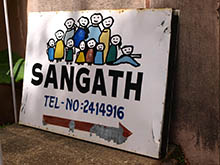In this section, Dr. Sastry explains how she organized student feedback, and some of the challenges she faced in guiding the students through their projects.
Feedback Logistics
Students signed up for slots with our expert panel to discuss their ideas, but they also had to sign up for slots to meet with me. They read the expert bios in order to decide how to construct their schedules. I gave some advice about trade-offs, and suggested who might be helpful to talk to. They drew numbers and signed up for meeting timeslots sequentially, so it was a fair system, more or less.
I met teams early on the second day of the workshop to give them feedback on their initial drafts, they had more time later that day, and additional times on the third day. Students were drafting materials, then discussing, then adding to the materials throughout. The only thing they were not able to do was go back to the expert, or find another expert. There was only one shot: pick your experts, and go talk to them.
Types of Instructor Feedback
I gave feedback about students' emerging ideas and hypotheses after looking at their draft materials. Sometimes they had very big ideas that were far from what the organization would be able to achieve, so I steered them toward more practical thinking. I was trying to get them to think about what would be most helpful for Sangath. What could they implement soon, what would be useful to them now?
A Challenge
One of the difficulties for everyone was finding an organizing framework for thinking about so many ideas. One of the things I did during feedback sessions with most teams was to say, is there some kind of structure we can put on this? Are there different axes related to technology and cost, or an aspect of patient experience that would provide a way to array these ideas? I think that was helpful.

